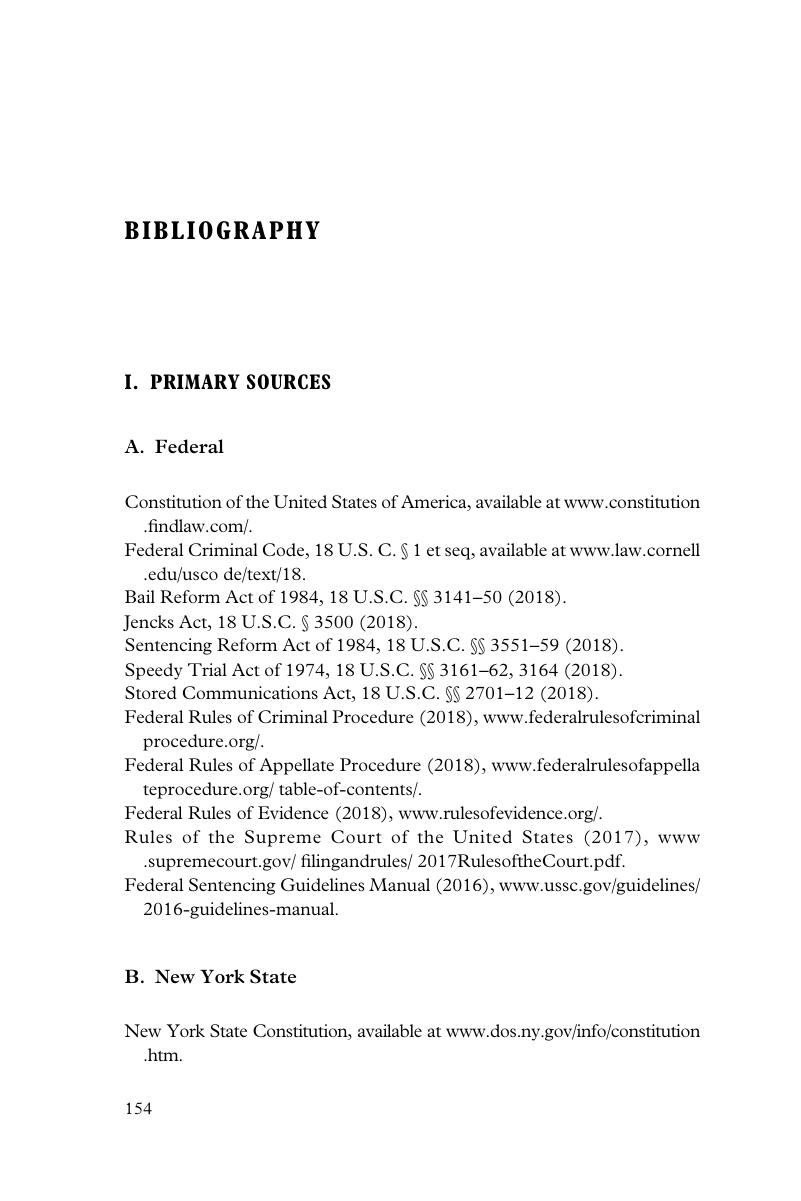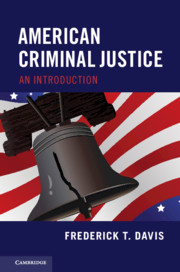Book contents
- American Criminal Justice
- American Criminal Justice
- Copyright page
- Dedication
- Contents
- Acknowledgments
- 1 Introduction
- 2 The Federal Structure; Sources of the Law
- 3 Investigation and Evidence-Gathering—The Participants
- 4 Investigation and Evidence-Gathering—Procedures
- 5 Arrest and Pretrial Detention
- 6 The Decision to Prosecute, or Not
- 7 Joinder of Charges and Defendants
- 8 Venue
- 9 Assistance of Counsel
- 10 Trial Rights and Preparation for Trial
- 11 Alternative Outcomes
- 12 Double Jeopardy
- 13 The Trial
- 14 Sentencing
- 15 Appeals
- 16 Corporate Criminal Responsibility
- 17 Internal Corporate Investigations
- 18 Professional Responsibility
- 19 Conclusion
- Bibliography
- Index
- References
Bibliography
Published online by Cambridge University Press: 08 June 2019
- American Criminal Justice
- American Criminal Justice
- Copyright page
- Dedication
- Contents
- Acknowledgments
- 1 Introduction
- 2 The Federal Structure; Sources of the Law
- 3 Investigation and Evidence-Gathering—The Participants
- 4 Investigation and Evidence-Gathering—Procedures
- 5 Arrest and Pretrial Detention
- 6 The Decision to Prosecute, or Not
- 7 Joinder of Charges and Defendants
- 8 Venue
- 9 Assistance of Counsel
- 10 Trial Rights and Preparation for Trial
- 11 Alternative Outcomes
- 12 Double Jeopardy
- 13 The Trial
- 14 Sentencing
- 15 Appeals
- 16 Corporate Criminal Responsibility
- 17 Internal Corporate Investigations
- 18 Professional Responsibility
- 19 Conclusion
- Bibliography
- Index
- References
Summary

- Type
- Chapter
- Information
- American Criminal JusticeAn Introduction, pp. 154 - 161Publisher: Cambridge University PressPrint publication year: 2019



